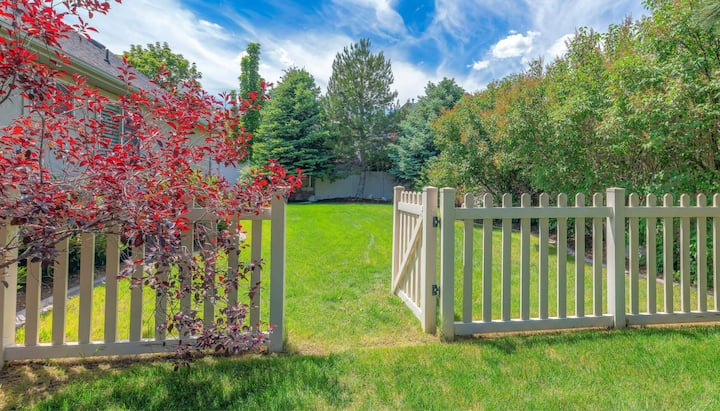
Types of residential and commercial fencing
Fences play an important role in both residential and commercial settings. They can provide security, define boundaries, as well as add a decorative element to any environment. The type of fencing used in each setting depends on a variety of factors, including the specific needs of the property owner, available materials, and local regulations.
Characteristics of residential fences
Residential fences come in a variety of styles, materials and sizes to suit any homeowner’s needs. Depending on the size of the property, a homeowner may choose from a variety of fencing options. Most residential fences are built for privacy, security or aesthetic purposes.
Wooden fences are one of the most popular types of residential fences due to their versatility and classic look. Wood can be stained or painted to match any home’s design style and they come in many different varieties such as picket, split rail, stockade or post and rail. Wooden fences are also relatively inexpensive compared to other fencing materials and they provide excellent insulation while providing an attractive boundary line.
Iron or aluminum fencing is another popular option for residential fencing due to its durability and strength. This type of fencing provides excellent security while still allowing some visibility through the fence panels. Iron or aluminum fencing also requires minimal maintenance and can last for decades with proper care and maintenance. Additionally, iron or aluminum fencing can be customized with decorative accents such as scrolls, finials or caps for added aesthetics.
Characteristics of commercial fences
Commercial fences are largely used to provide safety and security for businesses and institutions. These fences vary in type, but they typically share certain characteristics. Firstly, commercial fences tend to be much stronger than residential fences. While residential fences are generally made of wood or vinyl, commercial fences are usually composed of heavier materials like steel or wrought iron. These materials have better resistance against break-ins and vandalism, making them suitable for protecting valuable property.
Secondly, commercial fencing is designed with a higher degree of security in mind than residential fencing. Installing multiple layers of fencing with guard posts between them is a common practice in the industry. This allows for greater control over who gains access to the area and ensures that no one can enter without permission. Security features such as electric sensors and surveillance cameras can also be incorporated into the fence itself to improve safety further.
Installation options
Installing a fence is an important task that requires careful consideration. The most common installation options for both residential and commercial fences include professional installation, DIY installation, and prefabricated fencing. Professional installation is the ideal option for those who wish to have their fence installed quickly and correctly. This type of installation typically involves hiring a contractor to measure, plan, and construct the fence on-site with the necessary materials. DIY installation is another popular option, as it allows property owners to save money by purchasing materials directly from local hardware stores and constructing the fence themselves.
This option is suited for those who are comfortable with basic construction techniques and have access to the required tools. Lastly, prefabricated fencing can be purchased from certain retailers in preassembled sections that require minimal assembly before being installed around properties. Though this option does not offer as much customization as other methods, it is often more affordable and less time consuming than traditional DIY or professional installations. Regardless of which method one chooses for their fencing project, proper research should be conducted beforehand to ensure that all safety protocols are followed during its construction.
Maintenance requirements
Once a residential or commercial fence has been installed, it is essential to maintain it. Regular maintenance includes inspecting the fence for damage or signs of wear, checking the posts and fasteners for potential weakness, and cleaning the fence to remove dirt and debris. To ensure that a residential or commercial fence remains secure and safe, it is essential to know the maintenance requirements for each type of fencing material.
Wooden fences are one of the most common fencing materials used in residential and commercial applications. Wooden fences require regular inspections to check for damage from pests such as termites and ants and general wear due to weather exposure. In addition, wooden fences need to be restained or resealed regularly to keep them looking good and protect them from moisture damage.
Vinyl fencing is another popular choice for residential and commercial purposes because of its durability, low-maintenance requirements, and stylish appearance. Vinyl fencing may require an occasional hose down or light brushing with a soft cloth to keep it looking its finest. However, vinyl fencing does not require staining or sealing like wood fences, making it much easier to maintain over time.
If you’re looking for a network that will make your fence or gate installation a priority, you can contact our fence network experts for additional information about your next project.